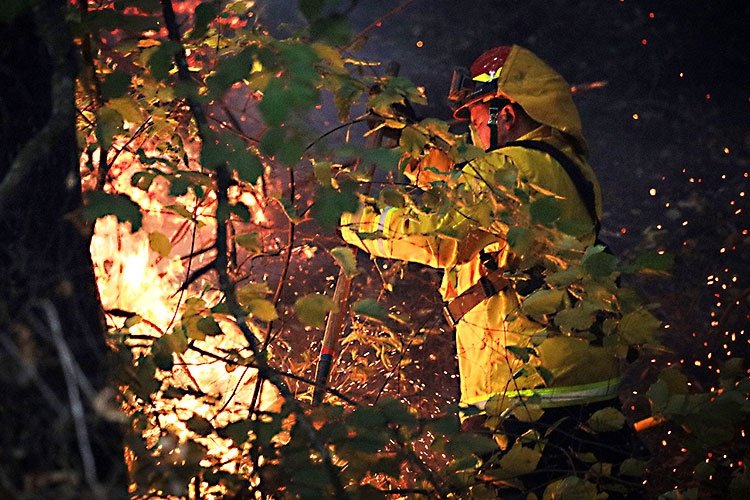A Presidential disaster declaration clears the way for immediate aid for CZU Lightning Complex Fire survivors.
California businesses and residents who suffered damage or losses from the wildfires must register for disaster assistance.
FEMA Process
FEMA has programs that may provide some financial assistance for eligible survivors. The aid may include assistance for housing and other disaster-related needs such as child care, medical and dental expenses.
First, if you have not already done so, contact your insurance company and file a claim for the disaster-caused damage you have suffered. You do not have to wait to start cleaning up, but be sure to take photographs or video of the damage and keep all receipts for repair work.
Applicants will be asked for the following information:
- Address of the damaged primary dwelling
- Current mailing address
- Current telephone number
- Social Security number
- Insurance information
- Total household annual income
- Routing and account number for checking or savings account (this allows FEMA to directly transfer disaster assistance funds into a bank account)
- A description of disaster-caused damage and losses
To be considered for all forms of disaster assistance, survivors must first register with the Federal Emergency Management Agency at www.disasterassistance.gov, by downloading the FEMA app on your smartphone or tablet, or by calling 800-621-3362 or TTY 800-462-7585.
Spanish speaking survivors can go to www.disasterassistance.gov/es.
The Disaster Assistance Improvement Program’s mission is to provide disaster survivors with information, support, services, and a means to access and apply for disaster assistance through data-sharing efforts among federal, tribal, state, local and private sector partners.
Examples of assistance that can be provided include grants for temporary housing and home repairs, low-cost loans to cover uninsured property losses, and other programs to help individuals and business owners recover.
Federal funding is also available to the state, tribal, eligible local governments and certain private nonprofits on a cost-sharing basis for emergency protective measures by wildfire in Santa Cruz County.
Willie G. Nunn is the federal coordinating officer for federal recovery operations in the affected area. Damage assessments are continuing in other areas, and more counties and additional forms of assistance may be designated after the assessments are fully completed.
FEMA is also offering aid to six more counties with wildfires: Lake, Napa, San Mateo, Solano, Sonoma and Yolo.
Lost Wages
FEMA Administrator Pete Gaynor approved California for a FEMA grant under the Lost Wages Assistance program. FEMA’s grant funding will allow California to provide $300 per week — on top of their regular unemployment benefit — to those unemployed due to COVID-19.
FEMA will work with Gov. Gavin Newsom to implement a system to make this funding available to California residents.
On Aug. 8, President Trump made available up to $44 billion from FEMA’s Disaster Relief Fund to provide financial aid to Americans who have lost wages due to the COVID-19 pandemic. On Aug. 21, the state of California agreed to administer a lost wages program for citizens unemployed due to COVID-19.
California is the 17th state to be approved for this aid program. To learn more about the lost wages supplemental payment, visit: www.fema.gov/fact-sheet/fema-lost-wages-supplemental-payment-assistance.
Firefighting Assistance
The Federal Emergency Management Agency has authorized the use of federal funds to help the state of California in combating the CZU Lightning Complex fires in Santa Cruz and San Mateo counties.
On Aug. 20, the state requested a “Fire Management Assistance Grant” for the CZU Lightning Complex. At the time, the fire threatened approximately 8,593 homes in the communities of San Lorenzo Valley, China Creek, Boulder Creek, Bonny Doon, Felton, Zayante, and Scotts Valley. The fire also threatened critical resources and infrastructure, including communications, transportation, power and gas distribution infrastructure; public schools; juvenile and adult detention centers; and area fire stations.
The FEMA regional administrator approved the state’s request on Aug. 20, as the fire threatened to become a major incident.
These grants provide federal funding for up to 75 percent of eligible firefighting costs. Eligible costs can include expenses for field camps, equipment use, materials, supplies and mobilization, and demobilization activities attributed to fighting the fire.
For details, visit fema.gov/assistance/public/fire-management-assistance.

